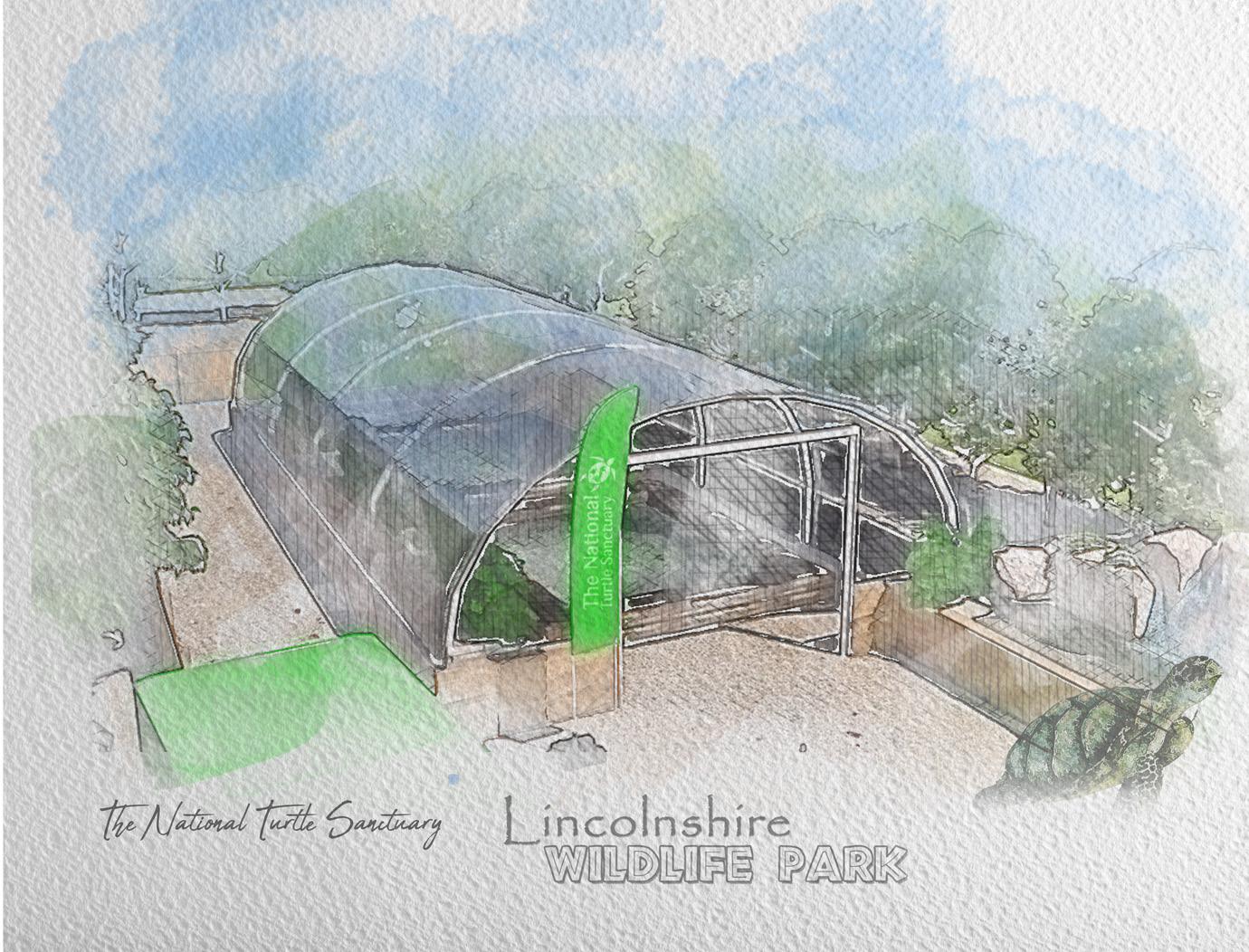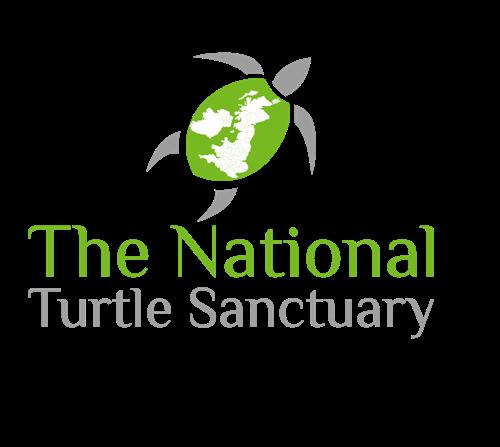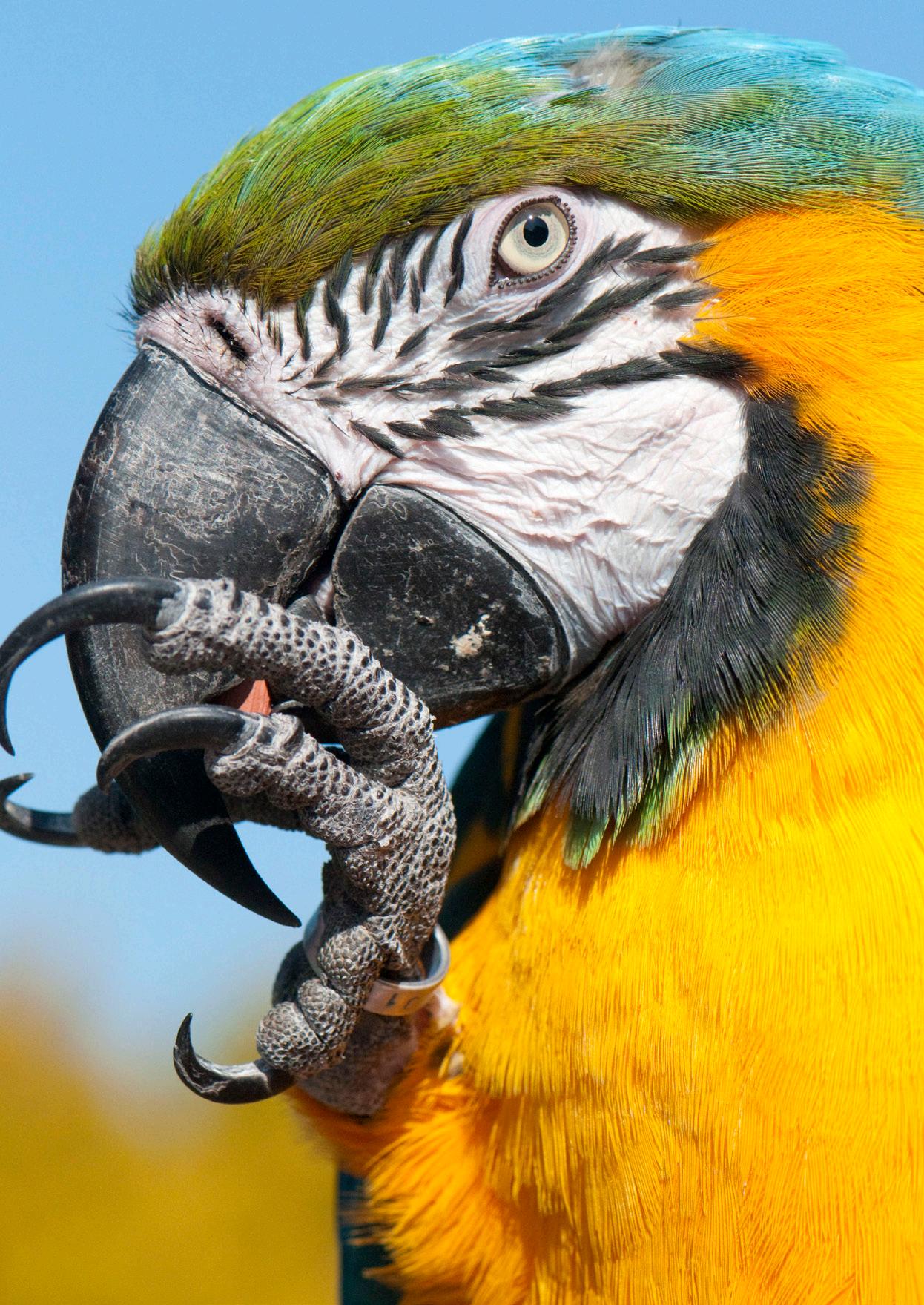
4 minute read
The National Turtle Sanctuary
The National Turtle Sanctuary is housed within the Parrot Zoo Trust – Lincolnshire Wildlife Park and was founded in 2019, providing another valuable resource at the Park – this time for these very special reptiles.
Where did it startIt was when the Park’s Herpetologist, Andy was visiting Leeds Tropical House to carry out research, that he concluded ‘dwell time’ (the length of time people pause) for turtles was higher than for many other species including Morelet’s Crocodile.
Advertisement
Andy developed and submitted a proposal for Steve suggesting that a disused pond/garden area could be made available for maybe 12 turtles. The National Centre for Reptile Welfare (NCRW) was quickly becoming inundated with turtles needing new homes. We were approached for help to assist due to the vast space available at the Park and the success of the sanctuary model developed for parrots.
After talks with Steve, and many experts in the field, it was agreed that a few turtles in some existing ponds was achievable and would increase dwell time.
What started out as housing a few turtles quickly escalated into creating a sanctuary, receiving turtles directly from owners.
Building a sanctuaryThe next stage in development was to design “pods” which would provide housing for the terrapins and could be placed in areas around the Park that were available. These “pods” needed to be deep enough to allow natural behaviours all year round and have adequate basking space for all inhabitants. The first ‘pod’ for these much-loved pet terrapins was a small and simple design that proved to be successful but only for our smaller turtles such as our Musk (Sternotherus) species, or juvenile Maps (Graptemys) species. Although the first design was effective because of the ease of installation of heaters, filters, and land mass, it could only be developed on a small scale for 2-3 adult specimens of Trachemys species. With the projected numbers we were likely to receive, this initial design would prove far too costly.
It also became apparent that many of the larger turtles that were coming in were unable to swim properly as their current tanks meant they were unable to learn in accommodation which was too small or not sufficiently deep and therefore the muscles required to swim were not developed enough. The solution was the development of a training pond which varied from very shallow to full depth of their future homes. It also allowed keepers to observe individuals easily.
As well as the building of these “pods” we have been fortunate to be able to create natural ponds around the park. As we’re a sanctuary open to the public, we have to be mindful of appearance and interaction with the general public which is key. These developments have been costly, and we are grateful for the support we have received along the way. From paths to plumbing to signage, all are costs that are easily forgotten or overlooked. Turtles and researchThe creation of the National Turtle Sanctuary has allowed LWP to strengthen research opportunities with several Universities including the University of Lincoln and Liverpool John Moore’s University.
One of the main research projects developed alongside the University of Lincoln is centered on stress levels when moving to a new habitat. Evidence now shows that within 1 hour the turtle’s stress levels return to normal, showing how these creatures adapt so well to change.
Another project with the University of Lincoln is testing for salmonella levels in individuals coming in from different water bodies including home tanks, ponds, and wild, natural bodies.
Research with Liverpool John Moore’s University has included conducting a finding and tracing project, monitoring movements of turtles across the UK and via importation. As we gather information from turtle owners, we have been able to support this important research.
The National Turtle Sanctuary has also supported the development of excellent links with the RSPCA who we now proudly work alongside to provide accommodation for case animals and forever homes for animals in need, not just for turtles but other reptiles, mammals, and birds.
What’s next for the sanctuaryWe currently have 350 turtles of varying species residing at the park and following the completion of our new natural pond will be able to increase numbers dramatically in the years to come. The addition of the poly tunnel and it’s heating equipment means that we will be able to continue to receive turtles throughout the winter months, where previously this would not be possible. Winter, especially leading up to Christmas is a time where people realise how little space they have or how much support these animals require, both monetarily and time wise, and that is why it was so important to ensure we are a year-round sanctuary.
Andy Ferguson












